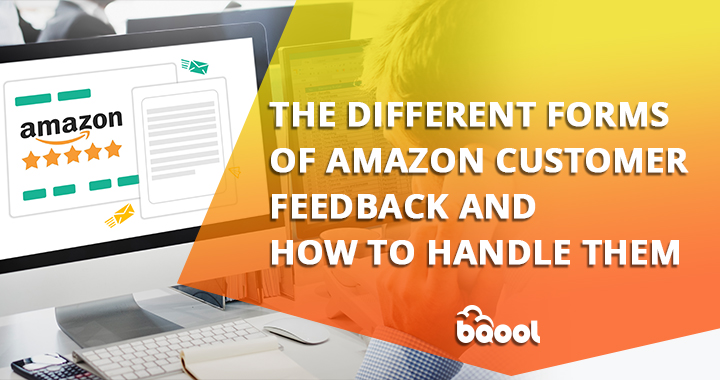How to Handle Different Types of Amazon Customer Feedback

From the early electronic data transactions of the 1970s to modern day online shopping, e-commerce has revolutionized the way we do business. Thanks to the universal availability of fast internet connections for homes and businesses, transactions can now be completed almost instantly.
Automated systems, massive customer reach and low operational costs are just a few of the advantages of e-commerce over brick-and-mortar stores. Amazon is one of the giants of the e-commerce world, having been launched in 1994 as an online bookstore operating out of founder Jeff Bezos’s garage. It has since grown to become the biggest online marketplace in the world.
Selling on Amazon is a smart move for brands because of its huge reach, ready-made infrastructure and great reputation. Whether you are a sole trader or a large retailer, Amazon provides everyone with the same opportunities for commercial prosperity. As with any e-commerce platform, delivering positive customer experience is crucial for success. Feedback provides essential data on customer experience, and how you use and respond to that feedback can make or break your business. Here is a rundown of the different types of customer feedback and the best ways to deal with them.
Direct Messages
Private messages and emails are often the first lines of direct contact between a buyer and a seller, and they should never be ignored. If a customer has a problem or query, a prompt and professional response from you will boost their confidence in your brand.
Amazon measures seller responsiveness as a key performance metric and expects sellers to respond to all messages within 24 hours. If you routinely fall short of this requirement, Amazon will issue a warning and may suspend your account if your performance does not improve. Slower response times increase the likelihood that the customer will file a claim or leave a negative review. So it is in everybody’s best interests for you to be on the ball in this area.
Customer Feedback
There are two types of public feedback on Amazon – seller feedback and product reviews:
Seller Feedback
Seller feedback ratings reflect your performance as a seller. Customers look at these ratings to select the best sellers from multiple options. Product reviews are tied to the individual product, and they are useful for customers when choosing which product to buy. It’s a great idea to use emails or product inserts to encourage customers to leave honest feedback and reviews. Unsurprisingly, the feedback and reviews that customers leave will affect your performance and profits going forward. Positive ratings create a positive feedback loop, encouraging more sales and hence even more positive reviews. Of course, negative ratings can have the opposite effect. But if you receive negative ratings or reviews, don’t despair. Negative feedback is a valuable source of data about where you could make improvements, and how you handle it can make all the difference.
Product Reviews
When you receive a negative customer feedback rating, the first thing you need to do is to assess what went wrong with your service. Is there an outstanding issue that could be resolved by getting in touch with the customer? If so, take action on the issue and politely request that they remove the feedback once the issue is satisfactorily resolved. If the problem is one that was out of your control, like a courier losing the package, you can ask Amazon to remove the rating. Another valid reason for removing a negative rating is if the customer wrote a product review instead of seller feedback.
When it comes to negative product reviews, identify the reason for the bad review and see if you can resolve it with a replacement or refund. Reach out to the customer directly and find out what you can do to make things right. It is not permitted to offer an incentive in exchange for amending a review, but good customer service never goes amiss. There are a few criteria that Amazon considers grounds for removing product reviews. This includes irrelevant or inappropriate content, low word count or links to external sites. If the review ticks any of these boxes, contact Amazon and request removal. If you don’t yet have any product reviews, you can set up an automated message to prompt customers to review the item after delivery.
Social Media
Social media is a valuable source of free, real-time customer feedback. Make a habit of checking the major social media networks for any positive or negative mentions of your brand, and set up Google Alerts so that no mention slips through the net. Impress customers by being proactive in responding to comments and issues even when they haven’t contacted you directly. Social media is also useful for monitoring feedback about your competition. This allows you to always stay ahead of the game. Encourage satisfied customers to share their positive experiences on social media, and their evangelising will drive organic growth for your brand.
Author’s bio:
Cloe Matheson is a freelance writer who lives in the gorgeous South Island city of Dunedin, New Zealand. An avid reader, Cloe has written articles on a plethora of topics including travel, lifestyle, and business.








